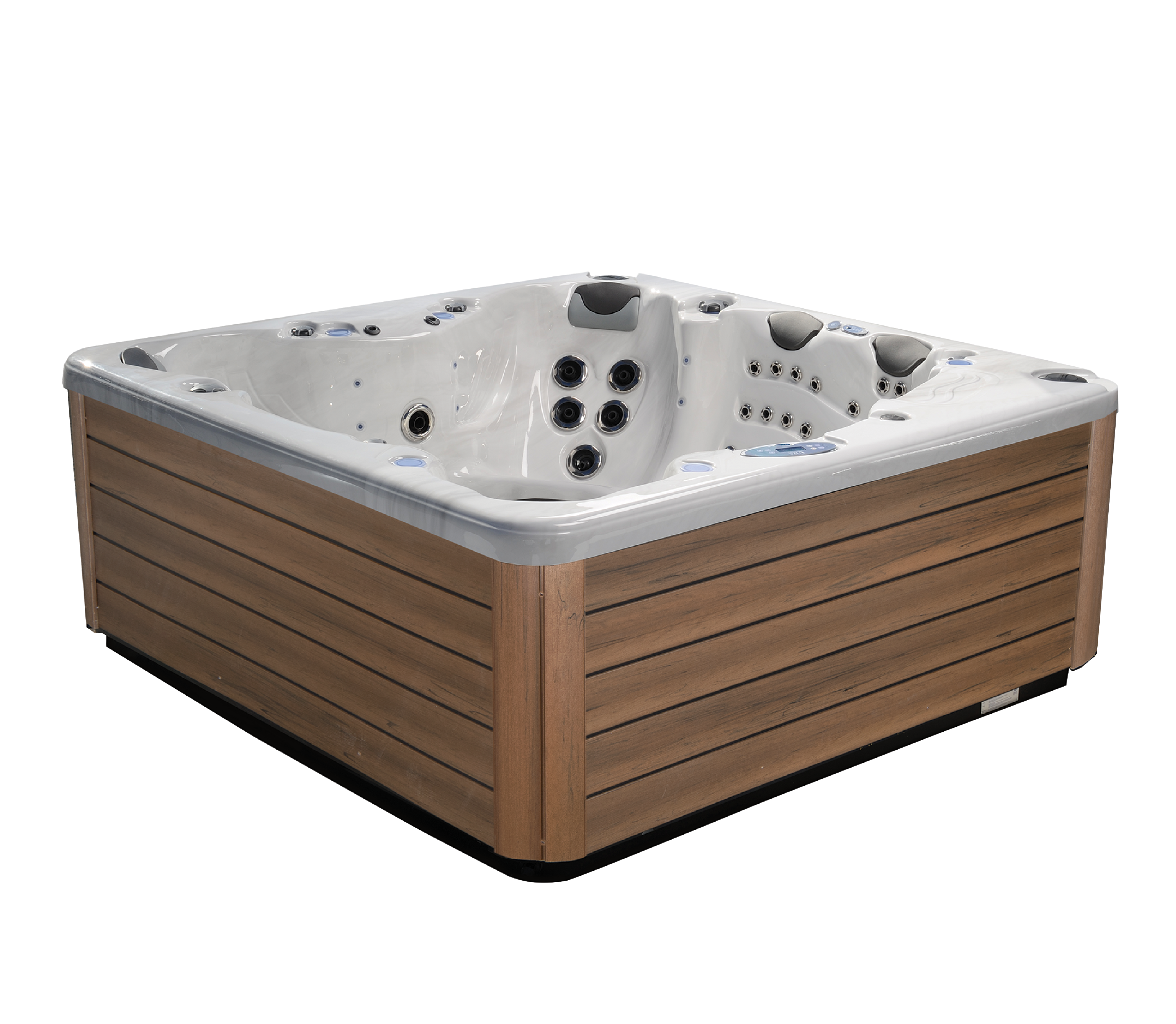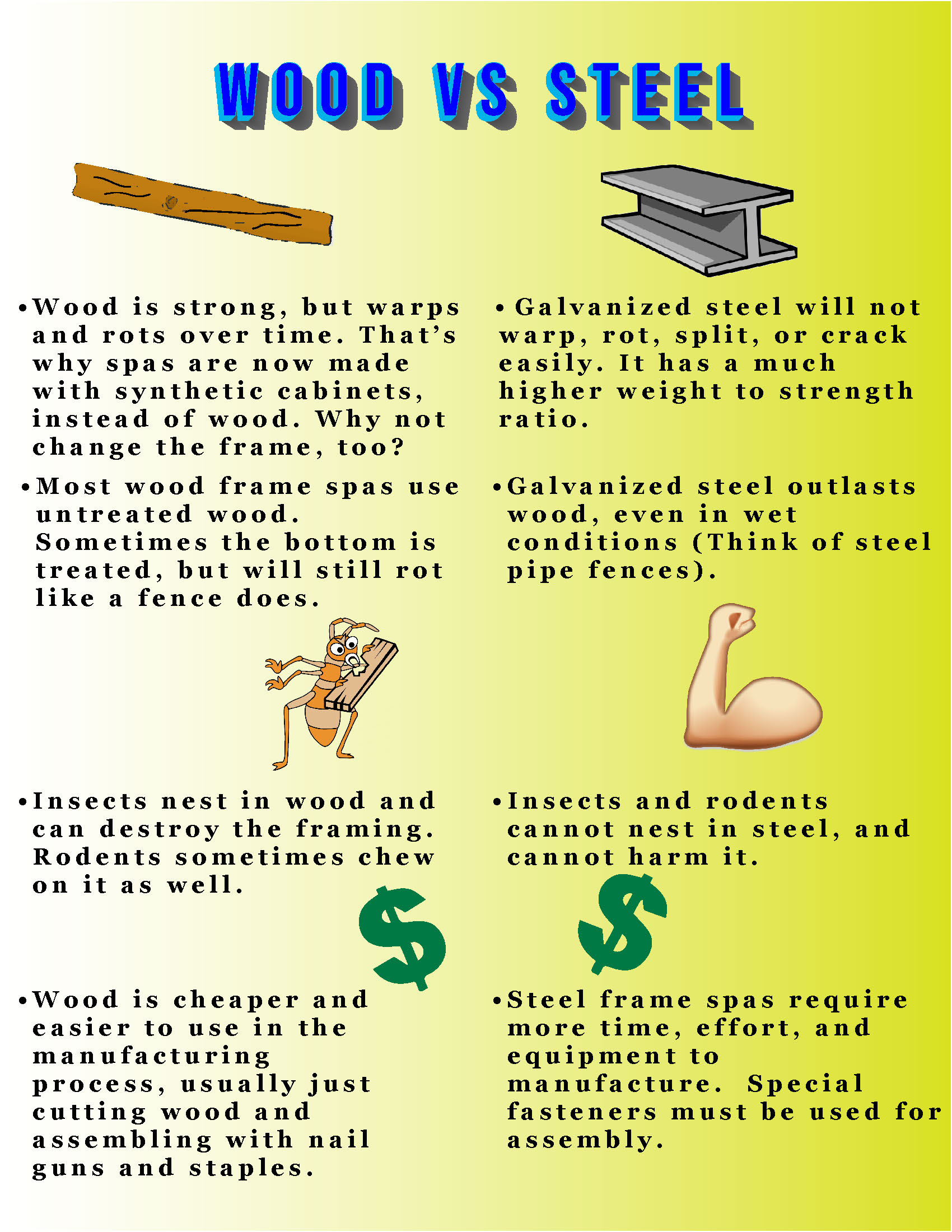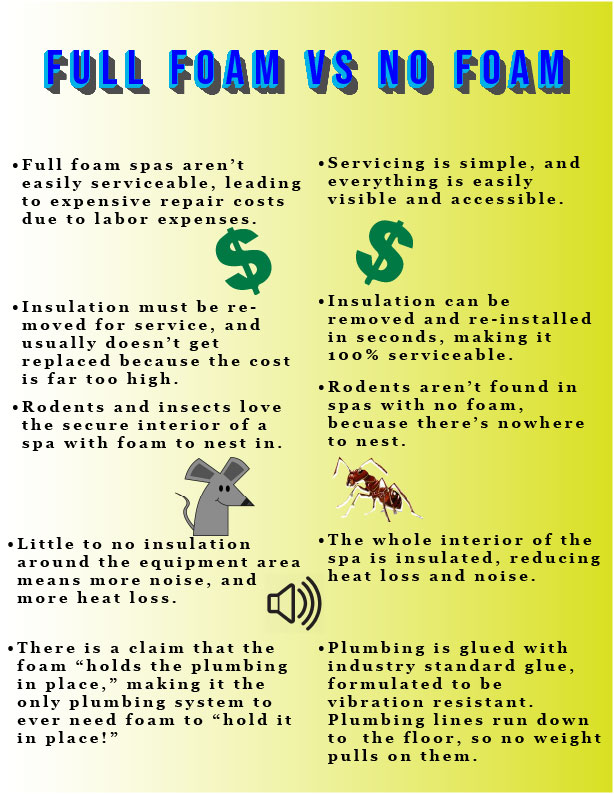Posted on 04/06/2019
Hot Tub Buying Guide

Want to make the right choice when you purchase a new hot tub?
Follow this simple guide...
Hot tubs can be a large investment. With some knowledge and finesse, you can find yourself soaking worry-free in the comforts of your own backyard for years to come. Take the wrong turn though, and you might as well fill up your tub with cash, soak for a bit, and light it on fire when you're through becuase it may still save you some money in the long run! I'm going to discuss the craftmanship of hot tubs. What makes the best hot tub? What company is worth dealing with? Who wants to build a relationship with you, and who wants to take your money and run?
"These are very important things to know when purchasing a new hot tub."Let me just say, for the last 15 years, our company has been doing service on all brands of spas. I personally have seen 10 of those, with thousands of service calls every year. We've seen what fails, and what lasts, what's easy to work on, and what's difficult. We've dealt with nearly all of the hot tub manufacturers, and we know who takes care of their customers and who doesn't. These are very important things to know when purchasing a new hot tub.
C'mon, a "hot tub" is a hot tub, right?

If that's true, then a mattress is a mattress! We all know that's just not true. You need to find the hot tub that fits you, literally. You have to fit in it comfortably, and it also needs to fit in the space you have in mind for it. You should sit in the hot tub before you purchase it, like you would test drive a car. Many hot tub dealers will even let you "wet test" a hot tub! A hot tub isn't one-size-fits-all, and there's no one-size-fits-all budget, either. The good news is, there's a good quality hot tub available for almost any space, and any budget.
Let's boil it down.
The Dealer
- Are They Local?
- How Long Have They Been in Business?
- What Are Their Reviews and Ratings Like?
- How Long is Their Relationship With The Manufacturer?
Your dealer is your source for answers, parts, service, chemicals, and even warranty issues. Make sure they're gonna be there when you need them. Many hot tubs are sold out of chain stores, parking lot sales, and convention centers from companies far away. Nevertheless, they'll assure you that they will service your spa. Don't wait to find out later that they don't! It's up to you to research their company, and make sure they will keep their word.
Hot tub dealers notoriously come and go, leaving behind customers with no one to turn to when they need service or proprietary parts like a headrest, jet, or new cover.
You'd be surprised how many people overlook this step. This is one of the most important.
If a dealer routinely bounces from one brand to another, it may be a red flag. Most dealers sell the same brand of spas for years and years because they believe in the product. If the manufacturer takes care of the dealer, and their customers, there shouldn't be much need for change.
The Manufacturer
- Who actually built the hot tub?
- Customer Service
- Warranty
In addition to the ratings of the dealer, you need to research the brand of the hot tub. Find out the manufacturer's name and see what you can find on them. I won't name any names in this post, but some brands have a tendency to leak much more than others. Some nearly catch on fire. Others physically fall to pieces in no time, and require far too much maintenance, but people are still buying them, and they come to regret it. They could have saved a lot of headaches by researching like you.
There are hot tub manufacturers out there that make a decent product. Their spa is made with quality components and has great potential, but if something fails, you just can't get them on the phone, and you can't get any help from them to fix it, even under warranty. Now you own an 800 lb. paper weight. Don't jump into a purchase because the hot tub is good quality. Make sure they have good customer service as well.
This is a big one! If you don't read the warranty for the hot tub before you buy it, you may be doing yourself a great disservice. Beware of salesman who claim they have a 3 or 5 year warranty, when they actually have what's called a tiered warranty. This is not industry standard. This means that parts and labor are covered for the first year. The second year? Half of the parts cost is covered along with the labor. Third year? Half of the labor and half of the parts are covered. The other half of the cost falls on you! You get the idea. The fifth year, you're basically paying for the service, while your neighbor is in their fifth year still getting all the parts and labor covered under warranty. Also, they likely still haven't had an issue with their spa. Warranty on a product says a lot! It says, "This is how long we think the parts will easily last, without any service." Warranty is your safety net, should something go wrong. A tiered warranty can sometimes give the illusion of a good, strong warranty. Smaller "entry level" or "budget" spas likely have a 1 year warranty. That's okay. Just watchout for full-size, flashy hot tubs that only carry a 1 year warranty. You'll be disappointed if you buy one.
Product Quality - What Makes a Hot Tub Good?
- The Cabinet
- The Frame
- The Shell
- Insulation
Almost all manufacturers have turned to a composite exterior. This is because of the history of hot tub siding. The wood required maintenance. It required staining or sealing every year, otherwise it would rot away. The problem is that you only stain or seal the exterior. If a leak goes unnoticed, it can rot the wood from the inside out.
Historically, spas were made with a wooden frame. That's okay for a building, but what about a fence or deck that stays outside? Okay, a building stays outside too, but its frame isn't constantly exposed to water like the other 3. Nowadays, people are turning to metal fence posts, and composite deck boards. For the same reason, hot tub manufacturers are turning to steel or composite frames. This eliminates upkeep altogether, and greatly increases the lifespan. Some are even polyethylene plastic. On the other hand, even some of the most well known companies still use wood frames. Astonishingly enough, some of them are not even pressure treated wood, but just regular pine. Why would they change the exterior, but not what's under the hood? Out of sight, out of mind? That's what I'm gonna go with. I mean, as long as you don't ever get a leak, it should be okay, right? Keeping this post as unbiased as possible for your benefit, but while we're on the subject, Vita Spa's galvanized steel frames have a lifetime warranty.
Hot tubs come in lots of shapes and sizes. Different seats in the same hot tub may have different depths, accomodating people of different heights. Some lounge seats may be too short for a tall person, and some tubs may be too deep for a shorter person. This is all dependent on the mold that was used to produce the shell. This is why it's important to sit in a hot tub before you buy it. Countless times, we've talked to customers who purchased their spa online or from a catalog without ever seeing it. When they received the spa, it wasn't how they imagined, but there was nothing they could do.
There plenty of choices when it comes to insulating materials used in hot tubs. The spray foam may have the best insulating value by building standards, but is it the right product for use in a hot tub? I don't think so. Lots of companies have chosen to use other types of insulation like Vita Spa's patented Northern Exposure® insulation, consisting of a combination of 3M™ Thinsulate™, a radiant barrier, and recycled denim. It also has a Lifetime Warranty, which nobody else has. Some use thick, removable sheets of styrofoam, a more traditional fiberglass insulation wrapped in plastic, and even bubble wrap.
Just like any other appliance, being able to service a hot tub is paramount. This is achieved with the removable insulation types. These types can be removed and re-installed quickly and still insulate very well. Spray foam is difficult to remove when repairs are necessary, and it's almost never replaced. It just costs too much to do it. When removable types are used, they wrap the whole perimeter of the hot tub so the entire cabinet is insulated. In most cases where spray foam is used, it's not sprayed on the side where the electrical components are mounted. Typically, we find little to no insulation on this side where plumbing lines are exposed, and sometimes parts of the shell. That kind of defeats the purpose, doesn't it?
Most hot tubs today are quite efficient, given that they actually have insulation in them. Don't be fooled by a thin layer of bubble wrap, or a thin layer of spray foam. These types must be used in conjunction with another type of insulation to boast good energy efficiency. Don't be afraid to ask if you can see inside the cabinet of a hot tub that you're interested in. Any salesman should be happy to take the side off, and let you see inside. Would you advise buying a car without looking under the hood?
If you remember all of these things and follow this guide, I know you'll be happy with the purchase that you make, even 10 years down the road!







